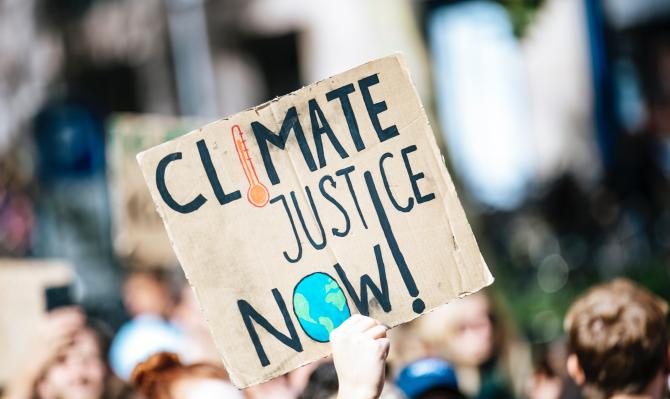The green recovery

Since there has been broad consensus on the need to transform the economy in order to make it environmentally sustainable, there has been a lot of emphasis on the important role that public policies must play. In the years prior to the COVID-19 pandemic, this broad consensus was forged at the global level and, in the case of the EU, there was a strong political will to transform the economy through the so-called Green Deal. This conviction has been redoubled after the outbreak of the pandemic. We are thus at a unique juncture to give even greater impetus to environmental policies, with support for a green economic recovery in the short term and, above all, the transformation of the economic model in the medium and long term in order to make it more sustainable and environmentally friendly.
One of the most noteworthy aspects of the European recovery plan, known as Next Generation EU (NGEU),1 is the significant role to be played by projects that contribute to the fight against climate change. It is important to note that promoting such projects does not necessarily mean that the impact on economic growth will be any less.2 In this regard, the attached table lists some of the measures that could play a leading role in driving a green recovery which have been targeted by several international agencies, such as the IMF.
- 1. See «Everything you ever wanted to know about the European Recovery Plan but were afraid to ask» in the MR11/2020.
- 2. In particular, there is a fiscal multiplier for short-term green investments of between 0.6 and 1.1, in line with the multipliers for total investment. See H. Pollitt (2011). «Assessing the implementation and impact of green elements of Member States’ National Recovery Plans. Final report for the European Commission (DG Environment)». Cambridge Econometrics.

However, achieving emission reduction targets will also require additional measures which, in some cases, could slow down economic growth. For example, there is broad consensus among economists on the need to impose a tax on emissions (known as carbon price) that discourages the production of polluting goods and services in favour of those that are more environmentally sustainable. In this regard, a recent IMF study notes that the implementation of a global set of measures such as those described in the table, combined with the application of a carbon price that gradually increases, would not hinder long-term growth and would have a positive effect on the environment. Specifically, thanks to these measures, greenhouse gas (GHG) emissions in 2050 could be reduced by 80% compared to current levels, and the remainder required to reach climate neutrality would be achieved by extracting emissions from the atmosphere using both natural processes, accelerated through reforestation, and artificial processes, such as carbon capture and storage. The impact of this set of measures on the global economy would end up being neutral in the long term: the cumulative growth up until 2050 in the event of taking these measures would be very similar to that in a scenario in which these measures are not carried out. Moreover, this comparison does not take into account the possibility that, without these measures, the damage to the economy could in fact be much greater, as it would increase the risk of extreme weather events that have a high economic impact. Indeed, it is estimated that the increased frequency and violence of adverse weather events and the change resulting from new weather patterns in some regions could reduce global GDP in the year 2100 by between 15% and 25% if timely action is not taken.3
In terms of job creation, a green recovery leads to a relocation of jobs between the most polluting and the cleanest sectors. If we focus on the energy sector, the labour intensity (the amount of employment per unit of energy produced) of renewable sources is much higher than in the fossil-fuel-based energy generation industry, especially in the case of photovoltaic solar energy. Several studies support this and find that the generation of employment when investing in renewable energies and energy efficiency is almost three times greater than in the fossil fuel industry.4 In any case, the green recovery must take into account those sectors that may be adversely affected, since in the absence of compensation mechanisms, the transition could not be carried out harmoniously and fairly.5
- 3. See M. Burke, M. Davis and N. Diffenbaugh (2018). «Large potential reduction in economic damages under UN mitigation targets». Nature.
- 4. In particular, it is estimated that an investment of 1 million dollars in renewable energies and energy efficiency generates 7.5 jobs (2.7 in the case of a fossil-fuel investment). See H. Garrett-Peltier (2017). «Green versus brown: Comparing the employment impacts of energy efficiency, renewable energy, and fossil fuels using an input-output model». Economic Modelling, pages 439-47.
- 5. See «The EU’s climate transition: a question of justice» in the MR06/2020 for further details.
In the case of NGEU, some 312.5 billion euros are expected to be paid out to EU Member States in the form of grants and a further 360 billion in loans between 2021 and 2026 in order to finance investment projects and reforms. The specific actions of the recovery plans must be presented by the Member States. However, on the climate front – one of the top priorities of NGEU, with 30% of the funds earmarked for combating climate change – they will need to focus on boosting clean and renewable energies, investing in cleaner transportation and improving the energy efficiency of buildings.6 If we focus only on the grants, most of them will be allocated according to the GDP of each country and the impact of the COVID-19 pandemic. In this regard, although unintentional, the distribution of these funds will be positively correlated with individual countries’ intensity of greenhouse gases per euro of GDP. This is a very positive development, since if investments are made properly, relatively more polluting countries will be able to catch up with those that already have a cleaner production model.
- 6. See «The Recovery Plan for Europe: a green wave for the real estate sector» in the Real Estate Sectoral Report of S1 2021.

In the case of Spain, the European grants will amount to 72 billion euros (around 6% of the GDP of 2019), of which 37% (26,640 million euros) will go towards green investments. The impact that these aids will have on economic activity and employment could be much greater than that observed in previous recovery plans. Specifically, the estimates described in this article regarding the impact on the labour market suggest that, for every euro of the 26,640 million, up to 60% more employment could be created compared to under the PlanE of 2008, provided the investments are made properly.7
- 7. The PlanE was the fiscal stimulus plan, without environmental conditions attached, which Spain implemented in 2008 in order to finance investment projects. It is estimated that for every million euros of the project, 5.7 jobs were created, whilst with green investment, according to the data shown in note 4, this figure could be around 9. See M. Alloza and C. Sanz (2019). «Jobs multipliers: evidence from a large fiscal stimulus in Spain». Working Paper 1922. Bank of Spain.



